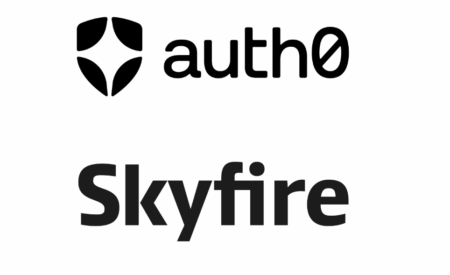The internet is changing again. After evolving from static web pages to dynamic applications and APIs, a new shift is underway. This time, it’s not just about users. It’s about agents.
Software agents—powered by large language models, task automation frameworks, and decision engines—are beginning to act on behalf of people and organizations. They book meetings, pull data, summarize documents, manage calendars, and even buy things.
This emerging world is what we call agentic commerce: a new mode of internet-native economic activity.
What Is Agentic Commerce?
Agentic commerce refers to transactions completed by AI agents without requiring direct human involvement at the moment of purchase.
This doesn’t mean humans are removed entirely. Agentic commerce means that the agent can act on behalf of a human or organization, using pre-approved identity and payment credentials, and optionally looping the human in for real-time decisioning. Think headless checkout for software.
Why Agentic Commerce Matters
The rise of AI agents introduces a fundamental change to how the web works. Today’s infrastructure is designed for humans, not agents. When humans browse websites, fill out forms, and pay for things, identity and payment are passed through familiar UIs. But agents are a different type of user. They interact through APIs and cloud browsers, often operating in environments where there is no user interface at all.
If we want to enable commerce in this world, we need new primitives. Specifically, we need two things:
- A way for agents to prove who they represent (identity)
- A way for agents to pay for what they access (payments)
Both of these must be programmable, interoperable, and secure.
Tokenized Identity: Who Is the Agent Acting For?
The first question any service should ask an agent is: who are you representing?
This is especially critical because agents are not just bots scraping content or executing background tasks. Increasingly, they represent users: individuals, businesses, and institutions who are delegating work to software. Commerce is ultimately conducted on behalf of, and between, these human entities.
Through tokenized identity, agents can carry structured, verified credentials issued by trusted identity providers. These tokens can include email addresses, names, business IDs, and more—all introspectable by the receiving service.
The key is that these tokens allow agents to carry the identity of the principal in a standardized format. This enables access control, auditability, and personalization.
Who Needs to Accept Tokenized Identity?
This isn’t just a tool for developers. Entire industries will need to ingest and process agent identity tokens:
- Websites and bot protection platforms (e.g., anti-scraping/CDN layers)
- MCP servers and API gateways (e.g., controlled data infrastructure)
- Authentication providers and CIAMs (e.g., to create and manage accounts)
- Merchants and SaaS tools (e.g., to link usage to real customers)
These actors need standard ways to inspect identity tokens and understand who is requesting access. This goes beyond simple bot detection. It’s about attributing requests to actual people and organizations, and deciding what level of trust and access to grant.
The above examples aren’t theoretical. Skyfire is working with each of these today to accept tokens from agents. Including market leaders like Datadome and Cequence in the bot protection, Ory in the Authentication provider space, and AI tool providers like BuildShip.
Tokenized Payments: How Do Agents Pay?
Just as important as identity is the question of payment. Agents need a way to pay—without relying on brittle browser form-filling or problematic credit card autofill scripts while avoiding the 20 years of anti-bot protection built into these services.
Tokenized payments allow agents to carry authorized payment credentials and present them alongside identity. This can include:
- Tokenized credit cards
- Digital wallets (e.g., Apple Pay, PayPal)
- Stablecoins
- Account-to-account transfers
The advantage here isn’t just automation. It’s composability. Tokens can be scoped, reused, revoked, and combined with identity in a single credential. This enables agents to transact with high granularity and control, while giving merchants and services the ability to charge transparently and programmatically.
A Two-Sided Ecosystem: Creation and Acceptance
To make agentic commerce real, both sides of the transaction must be served:
- Agent builders need ways to create and manage tokenized identity and payments for the agents they deploy.
- Merchants, services, bot managers, and auth providers need ways to accept, inspect, and charge against these tokens.
These two sides must speak a common language. A standardized, open token format ensures that agents and services can interoperate, regardless of which platforms or issuers they rely on.
Unlocking New Markets
Agentic commerce isn’t just a new way to do old things. It unlocks entirely new categories of digital economic activity.
Retail & Travel
These are the first use cases that usually come to mind as obvious examples. Agents can shop, book travel, manage subscriptions. But to do this broadly, they need a way to bring verified identity and payments across many vendors. A tokenized approach makes this possible across marketplaces, not just within closed and isolated ecosystems.
Website Access
A quiet revolution is coming to the web. As AI consumes more content and ad revenues decline, content providers are shifting to paid access models. This market could rival or surpass digital advertising in importance.
To support it, agents need the ability to identify and pay on the fly via HTTPS headers. Websites need to verify identity and receive payment without requiring a login and checkout flow.
Service Access
Agents will increasingly access:
- Web APIs (OpenTable, Yelp, Rezy)
- Vertical SaaS tools (finance, law, real estate)
- Document summarization, translation, and data enrichment tools
These services will be sold not per seat but per-use, requiring payment and identity per invocation. Micro-payments and verification tokens unlock this model.
Unbundled SaaS
As SaaS unbundles, agents will pay for capabilities like compute, inference, storage, transformation, instead of per seat pricing. These interactions need pricing, access control, and auditability, all of which tokens support natively.
Business Payments
Enterprise agents will increasingly settle payments across supply chains, pay vendors, and automate treasury. These flows require robust authorization, audit trails, and payment mechanisms that are programmable and secure.
Agent-to-Agent Payments
Finally, a rapidly emerging use case: agents paying other agents. As marketplaces like Apify and BuildShip (both Skyfire launch partners) grow, agents will find and hire one another to complete tasks. These ecosystems need a common token standard to exchange identity and value securely.
Why This Needs to Be Open
The history of the web shows us that closed, centralized systems don’t scale as fast. Agentic commerce must be built on open protocols that:
- Allow many identity issuers and payment methods
- Enable inspection and enforcement by recipients
- Work across the open internet, not just within platforms
Tokenization is the abstraction layer that makes this possible. It decouples identity and payment from underlying systems and allows them to flow securely between agents and services.
Skyfire has released the first open tokenization protocol for payments and identity: kyapay.org
The Road Ahead
We are still early in the age of agents. But the infrastructure must be built now. Just as OAuth, and HTTPS enabled the web to become trustworthy, tokenized identity and payments will underpin the agentic economy.
Agents will need credentials. Services will need to verify and monetize.
Tokenization is the bridge.
If we get this right, agents won’t just consume content or trigger workflows. They’ll become true participants in a new economic layer of the internet, one built for autonomy, interoperability, and trust.
Checkout Skyfire.xyz for how tokens are currently being issued and accepted by a growing number of agents, ai platforms and merchants.



